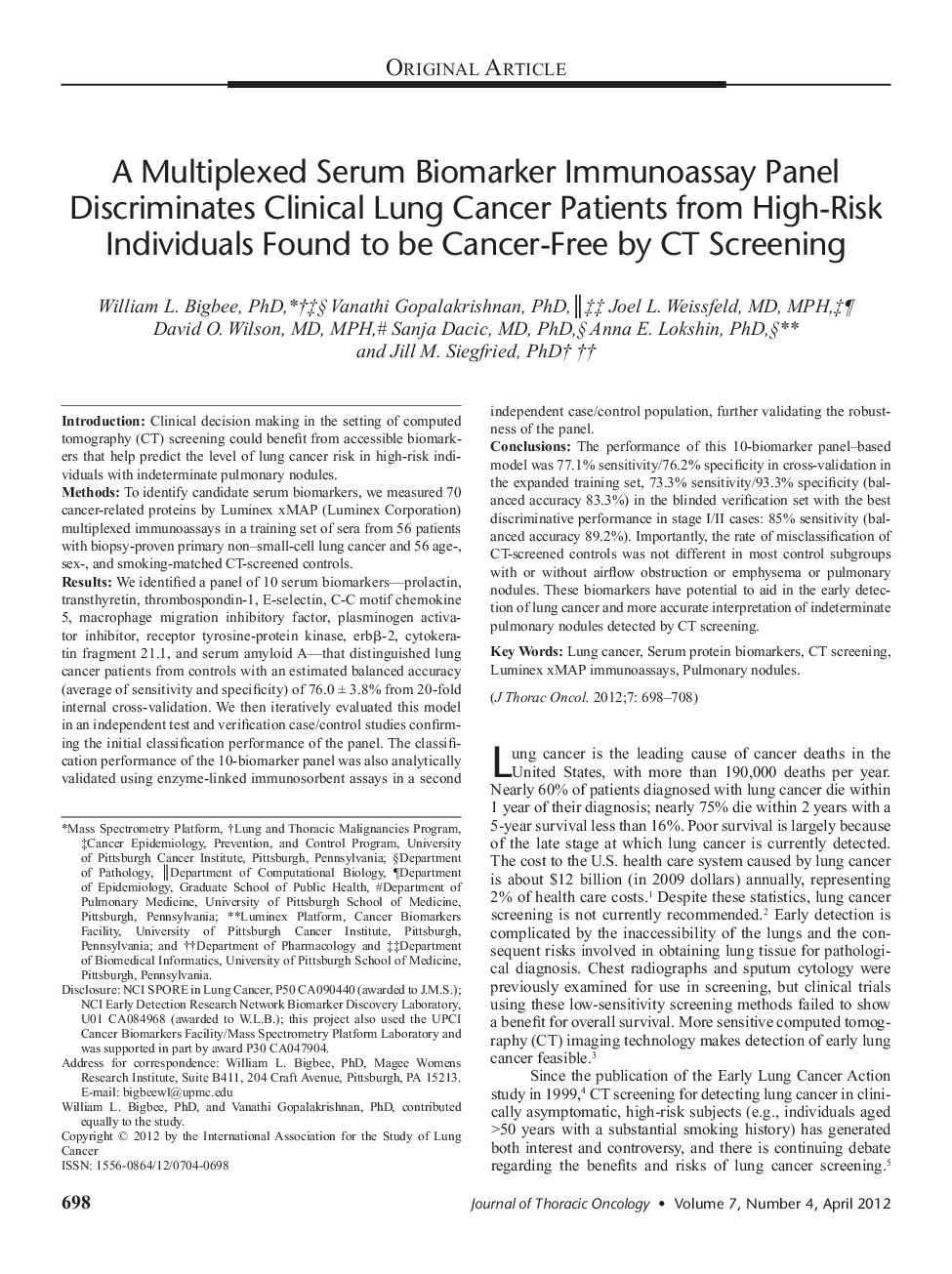| Article ID | Journal | Published Year | Pages | File Type |
|---|---|---|---|---|
| 3990775 | Journal of Thoracic Oncology | 2012 | 11 Pages |
IntroductionClinical decision making in the setting of computed tomography (CT) screening could benefit from accessible biomarkers that help predict the level of lung cancer risk in high-risk individuals with indeterminate pulmonary nodules.MethodsTo identify candidate serum biomarkers, we measured 70 cancer-related proteins by Luminex xMAP (Luminex Corporation) multiplexed immunoassays in a training set of sera from 56 patients with biopsy-proven primary non–small-cell lung cancer and 56 age-, sex-, and smoking-matched CT-screened controls.ResultsWe identified a panel of 10 serum biomarkers—prolactin, transthyretin, thrombospondin-1, E-selectin, C-C motif chemokine 5, macrophage migration inhibitory factor, plasminogen activator inhibitor, receptor tyrosine-protein kinase, erbb-2, cytokeratin fragment 21.1, and serum amyloid A—that distinguished lung cancer patients from controls with an estimated balanced accuracy (average of sensitivity and specificity) of 76.0 ± 3.8% from 20-fold internal cross-validation. We then iteratively evaluated this model in an independent test and verification case/control studies confirming the initial classification performance of the panel. The classification performance of the 10-biomarker panel was also analytically validated using enzyme-linked immunosorbent assays in a second independent case/control population, further validating the robustness of the panel.ConclusionsThe performance of this 10-biomarker panel–based model was 77.1% sensitivity/76.2% specificity in cross-validation in the expanded training set, 73.3% sensitivity/93.3% specificity (balanced accuracy 83.3%) in the blinded verification set with the best discriminative performance in stage I/II cases: 85% sensitivity (balanced accuracy 89.2%). Importantly, the rate of misclassification of CT-screened controls was not different in most control subgroups with or without airflow obstruction or emphysema or pulmonary nodules. These biomarkers have potential to aid in the early detection of lung cancer and more accurate interpretation of indeterminate pulmonary nodules detected by CT screening.
